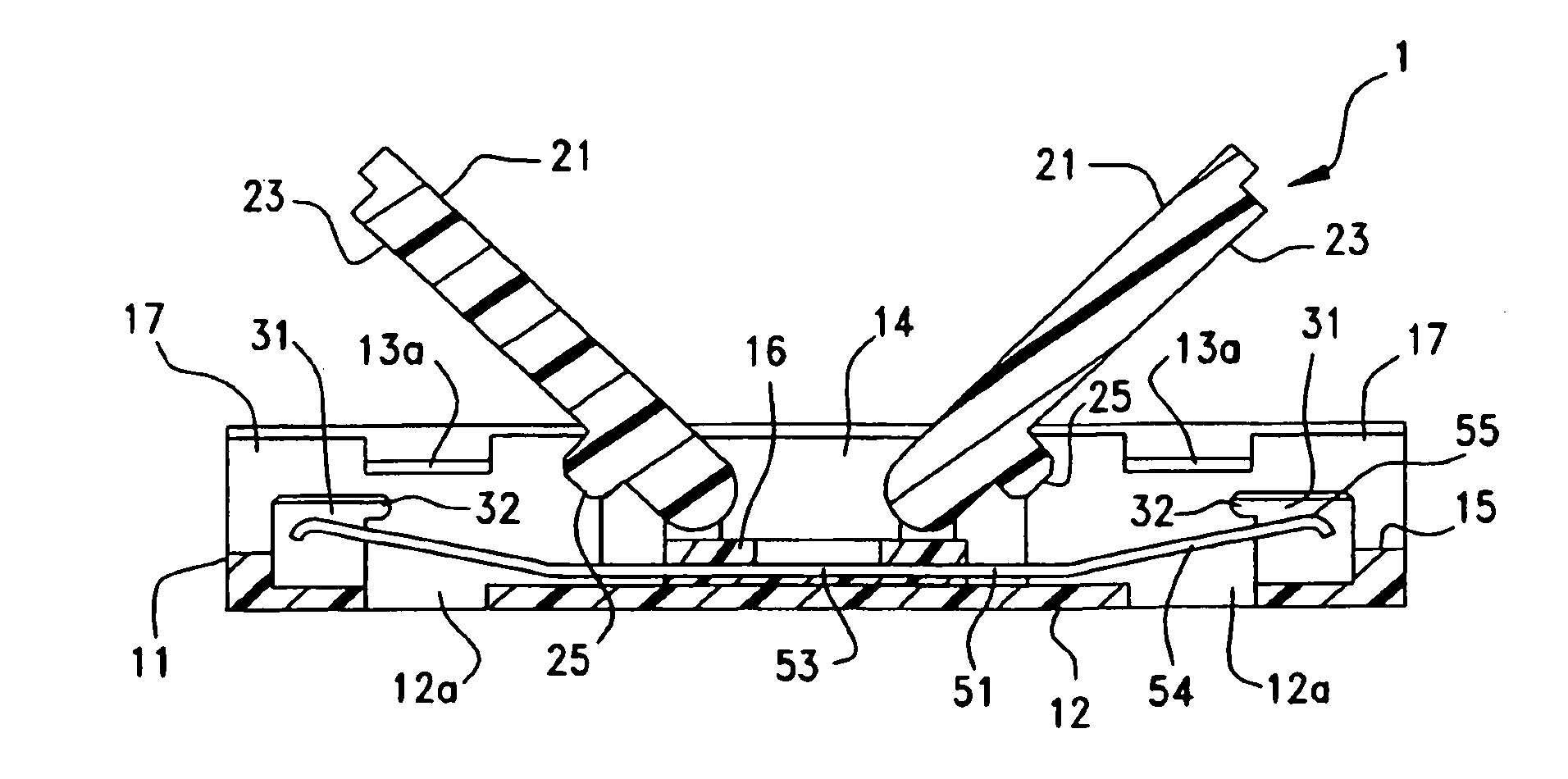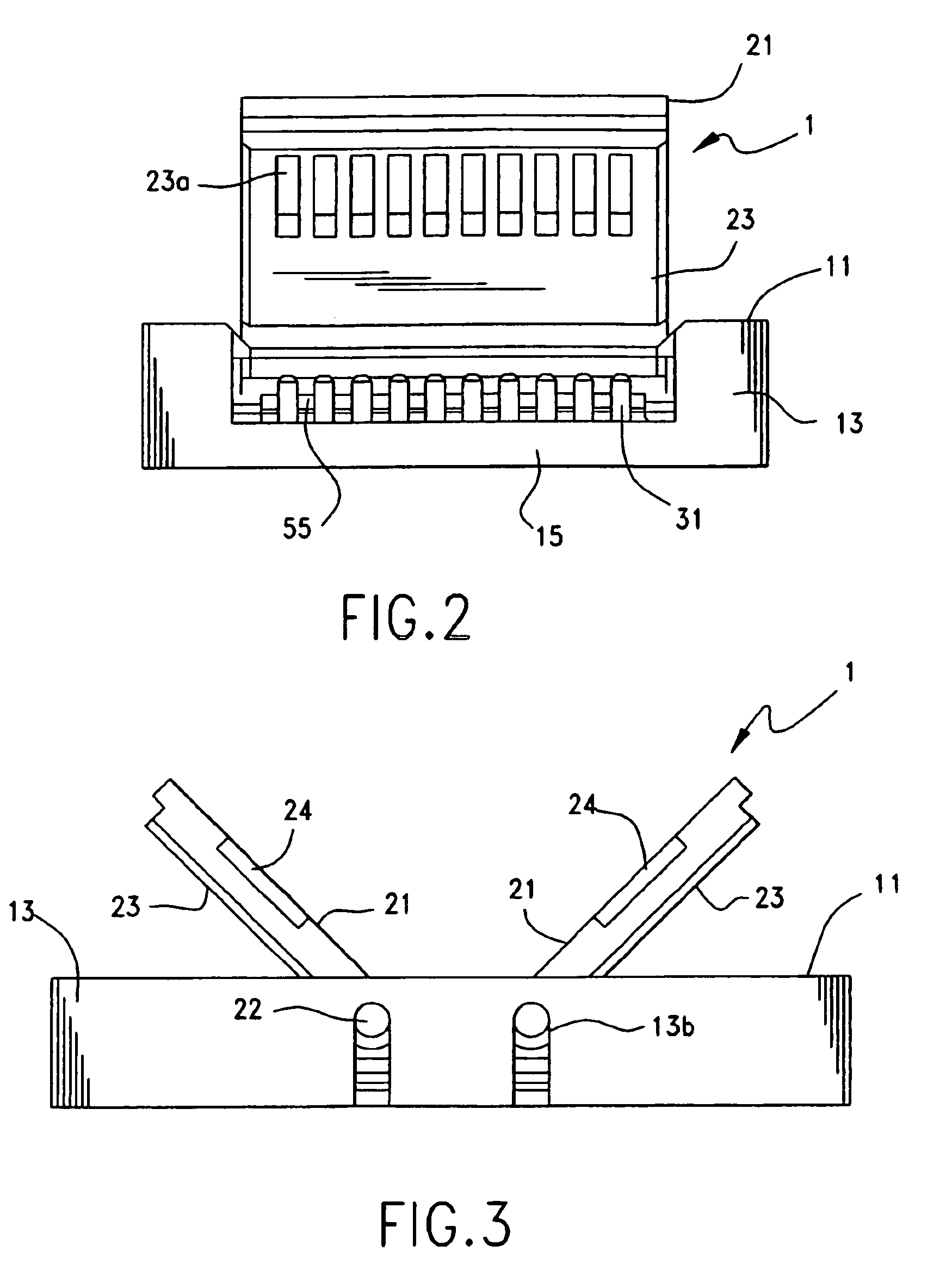Relay connector for flexible cables
a flexible cable and connector technology, applied in the direction of electrical apparatus, connection, coupling device connection, etc., can solve the problems of difficult to increase the number of terminals, achieve multipolarity of the connector, and the opening width may not be very large, so as to achieve easy and surely connection, increase the width of the housing, and simple structure
- Summary
- Abstract
- Description
- Claims
- Application Information
AI Technical Summary
Benefits of technology
Problems solved by technology
Method used
Image
Examples
first embodiment
[0036]In the Figures, reference numeral 1 designates a connector as a relay connector in the present invention, and the connector 1 is used for mutually and electrically connecting a pair of flat cables 101, which will be described later. The flat cable 101 is a flat plate-like flexible cable referred to as a flexible printed circuit (FPC), a flexible flat cable (FFC), or the like, but any type of cable may be used as long as it is a flat cable including conductive wires.
[0037]In this embodiment, representations of directions such as up, down, left, right, front, rear, and the like, used for explaining the structure and movement of each part of the connector 1, are not absolute, but relative. These representations are appropriate when the connector 1 is in the position shown in the figures. If the position of the connector 1 changes, however, it is assumed that these representations are to be changed according to the change of the position of connector 1.
[0038]The connector 1 has an...
second embodiment
[0070]In the second embodiment, representations of directions such as up, down, left, right, front, rear, and the like, used for explaining the structure and movement of each part of the connector 201, are not absolute, but relative. These representations are appropriate when the connector 201 is in the position shown in the figures. If the position of the connector 201 changes, however, it is assumed that these representations are to be changed according to the change of the position of connector 201.
[0071]Here, the connector 201 includes a pair of housings 211. Similar to the housing 11 according to the first embodiment, the housing 211 is a flat plate-like member which is integrally made of an insulating material such as a synthetic resin, for instance, the housing 211 is made of a plastic such as PBT, PC, LCP, PPS, polyamide, PEEK, or the like, and is integrally molded by a method such as injection molding. The housing 211 may be made of any material and molded by any molding me...
PUM
 Login to View More
Login to View More Abstract
Description
Claims
Application Information
 Login to View More
Login to View More - R&D
- Intellectual Property
- Life Sciences
- Materials
- Tech Scout
- Unparalleled Data Quality
- Higher Quality Content
- 60% Fewer Hallucinations
Browse by: Latest US Patents, China's latest patents, Technical Efficacy Thesaurus, Application Domain, Technology Topic, Popular Technical Reports.
© 2025 PatSnap. All rights reserved.Legal|Privacy policy|Modern Slavery Act Transparency Statement|Sitemap|About US| Contact US: help@patsnap.com



